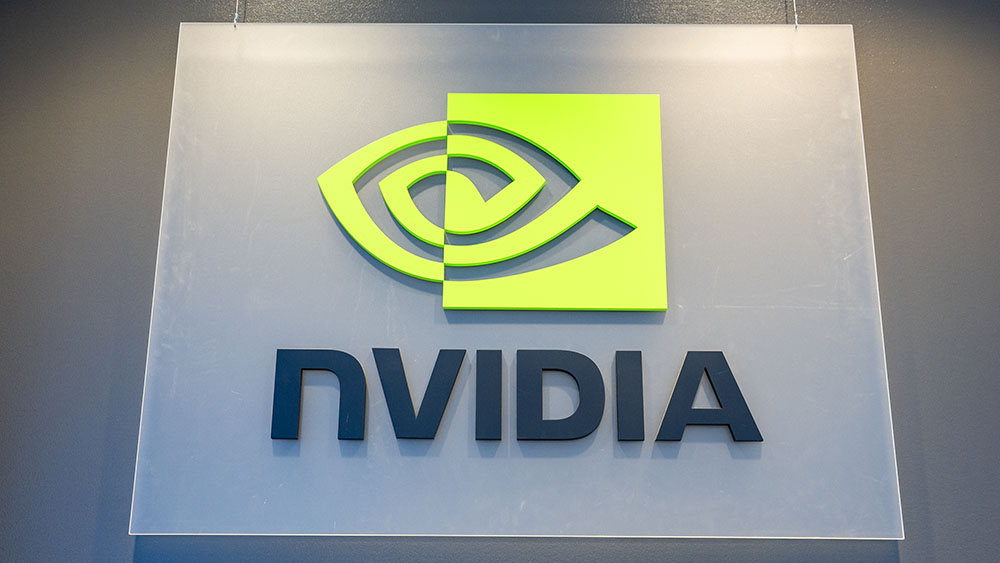Lightmatter’s photonic breakthrough: A leap forward in AI efficiency and speed
By willowt // 2025-04-10
Tweet
Share
Copy

- Lightmatter unveiled its Envise photonic computing chip on April 8, using light instead of electrons to drastically reduce energy consumption and accelerate AI processing, addressing inefficiencies in traditional silicon chips.
- Unlike conventional semiconductor tech, Lightmatter’s optical computing avoids heat dissipation and electron leakage, offering faster data transfer and circumventing the physical limits of shrinking transistors.
- The 3D photonic "superchip" connects thousands of GPUs with 114 terabits/sec optical bandwidth, eliminating bottlenecks by allowing data flow across the entire chip surface instead of just edges.
- Lightmatter’s co-packaged optics (CPO) reduce AI model training times by 8x by minimizing GPU idle time—a major cost and performance hurdle in data centers.
- Photonics could curb soaring AI energy demands (data centers use ~2% of global electricity). With an $850M funding round and $4.4B valuation, Lightmatter is poised to challenge industry giants like Nvidia in next-gen AI hardware.
The photonic revolution: Escaping Moore’s Law’s limits
For decades, semiconductor advancements have followed Moore’s Law, shrinking transistors to pack more power into chips. But as transistors approach atomic scales, progress has stalled. "We're hitting fundamental physical limits," explains Nick Harris, Lightmatter’s CEO, in a Reuters interview. Unlike traditional chips, which wrestle with heat dissipation and electron leakage, Lightmatter’s photonic technology sidesteps these issues entirely by using light—producing less heat and faster data transfer. Previous optical computing attempts struggled with precision, particularly with tiny numerical values, but Lightmatter’s innovation lies in splitting computations into manageable segments, preventing data loss. While Harris admits mainstream adoption may take a decade, the implications for AI—where speed and efficiency are critical—are profound.Passage M1000: Rewriting AI infrastructure
Hot on the heels of Envise, Lightmatter announced the Passage M1000—a 3D photonic "superchip" capable of linking thousands of GPUs with 114 terabits per second of optical bandwidth. The M1000 acts as an "edgeless" interconnect, allowing data to flow across the entire chip surface rather than just the edges, a bottleneck in today’s systems. Industry analysts like Vlad Kozlov of LightCounting call it a "compelling advancement" over existing copper-based solutions. Partnering with GlobalFoundries (GF) and Amkor, Lightmatter has made the M1000 manufacturing-ready, leveraging GF’s Fotonix platform to integrate photonics with silicon seamlessly.Solving AI’s idle GPU problem
A critical pain point in AI data centers is GPU idle time—processors waiting for data due to slow interconnects. Lightmatter’s Passage L200 and M1000 tackle this by replacing electrical wiring with light, cutting latency and boosting efficiency. Kasthuri Jagadeesan of Everest Group notes that Lightmatter’s co-packaged optics (CPO) design could slash AI model training times by 8x. This is crucial for enterprises deploying large language models (LLMs), where delays cost millions in wasted compute resources.The bigger picture: Energy and economic impact
Beyond speed, Lightmatter’s chips consume far less power—a game-changer as AI’s energy demands soar. Data centers currently account for ~2% of global electricity use, a figure projected to double by 2026. Photonics could curb this trend, aligning with sustainability goals. Investors are betting big: Lightmatter’s $4.4 billion valuation reflects confidence in photonics as the next frontier for AI hardware. Competitors like Nvidia are already exploring optical links, but Lightmatter’s vertical integration—combining computation and interconnection—gives it an edge.What’s next?
The M1000 platform launches in summer 2025, with the L200 following in 2026. Lightmatter plans to showcase its tech at April’s Optical Fiber Conference in San Francisco, where industry leaders will gauge its real-world viability. Lightmatter’s dual breakthroughs—Envise for computation and Passage for interconnection—signal a turning point in AI infrastructure. As Harris puts it: "We’re looking at the future of processors." While challenges remain in scaling production, the potential to unlock faster, greener AI makes photonics a technology to watch. For enterprises racing to deploy AI at scale, Lightmatter’s innovations may soon become indispensable.Conclusion
The advent of Lightmatter’s photonic computing chips marks a significant leap in the evolution of AI technology, addressing the critical bottlenecks of energy consumption and computational speed. By harnessing the power of light, these chips not only promise to revolutionize AI workloads but also pave the way for a more sustainable and efficient computing future. As the industry continues to grapple with the limitations of traditional silicon, Lightmatter’s innovations offer a beacon of hope, potentially reshaping the landscape of data centers and AI applications worldwide. With the potential to reduce energy usage and enhance performance, Lightmatter’s photonic solutions could become the cornerstone of next-generation computing, driving forward the era of advanced AI and sustainable technology. Sources include: Reuters.com LightMatter.co NetworkWorld.comTweet
Share
Copy
Tagged Under:
glitch AI power electricity IBM breakthrough invention Big Tech future tech photonics Lightmatter
You Might Also Like
Possible biosignatures detected on Exoplanet K2-18b, raising hopes for alien life
By Cassie B. // Share
U.S. judge rules Google monopolized digital ad markets, setting stage for potential breakup
By Willow Tohi // Share
Trump vows to fast-track Nvidia’s $500B push for domestic AI chip manufacturing
By Cassie B. // Share
Scientists uncover hidden world of alien-like creatures beneath Antarctic ice
By Cassie B. // Share
U.S. FTC v. Meta: Landmark antitrust trial threatens to break up tech giant
By Willow Tohi // Share
Recent News
Trump's EO ending gain-of-function research sparks global debate on lab risks
By avagrace // Share
The hidden dangers of iron oxides in cosmetics and personal care products
By zoeysky // Share











